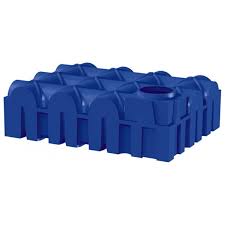
ABOUT
IT'S SIMPLE TECHNOLOGY
Rainwater Harvesting systems can look complex and daunting to begin with. They really aren’t, the technology is straight forward and a builder can install the systems using their own ground workers and plumbers.
WHAT IS RAINWATER HARVESTING?
Rainwater Harvesting is a concept that has been around for thousands of years. The process is to take the rainwater from the roof, down your down pipe and into a storage tank.
Whilst the water is traveling from your rooftop it must pass via a filtration system, either built in to the down pipes or better still built into the underground tank.
You then have clean fresh water stored in the underground tank. Please note you do not take the water from the ground i.e driveways or patios due to potentially causing contamination in the water.
Also it is not advised especially if you are using the water in the house to collect water that has come from a ‘Green Roof’. This rainwater can then be used for either toilet flushing, washing machine and anything external like irrigating the garden or washing the car.
The rainwater is pumped to the appliances via a pump either directly or via a gravity feed system, we will come to that shortly.
All Rainwater Harvesting Systems should have an overflow device so when your tank fills up and excess water or debris, leaves etc get discharged through the overflow device to a soakaway, watercourse or drainage system.
THERE ARE 3 MAIN TYPES OF SYSTEMS.
- Garden System
- Direct Feed System
- Gravity Feed System
HOW DO YOU SPECIFY THE RIGHT SYSTEM FOR YOU?
Within a Rainwater Harvesting System there are certain components that you need to decide which to use.The first job though is to ask yourselves, what are you going to use the water for? Read More >>>
RAIN ACTIV
CONCEPT
Rain Activ can combine the benefits of rainwater harvesting for non-potable applications with controlled release of attenuated water into the network.
Dual functionality to maintain supply and a SuDS (Sustainable Urban Drainage System) solution for the future.
The concept is simple but the design is innovative. The outcome is an effective, affordable decentralised water management system.
- Sites with low storm water discharge rates stipulated in planning conditions- Greenfield sites
- Where connection to the storm drain is allowed but maximum flow rates have been stipulatedBy collecting and slowing the water at source, the scale and cost of secondary SuDS infrastructure such as balancing ponds and geocellular storage can be heavily reduced.
For many developments this can increase the available land for development.Rain Activ can be converted to a dual purpose system utilising Rainwater Harvesting by simply and cost effectively by adding a pump and management system.This provides a system that has large sustainability in both heavy rain and drought.Our professional drainage consultants specify a system to meet the design criteria.
Systems are modelled using the latest version of hydraulic analysis software Micro Drainage™ Clients are provided with a detailed report ready to submit to planning authorities for approval.




